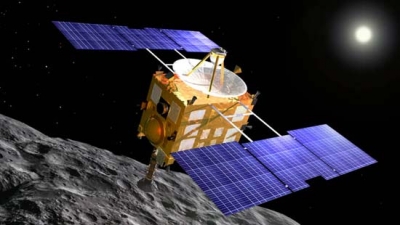
Scientists study meteorites for clues about the origin of Earth and the solar system because most meteorites are bits of asteroids that have fallen to Earth, and asteroids are believed to be leftover material from the time the solar system formed.
In 2005, for the first time ever, scientists scooped up rock samples directly from an asteroid using a spacecraft built especially for that purpose. The name of the spacecraft was Hayabusa. It was a robotic spacecraft developed by the Japan Space Exploration Agency (JAXA).
Hayabusa (Japanese for falcon’) was launched on May 9, 2003, and arrived in the vicinity of the asteroid Itokawa in mid-September 2005. In November 2005, it landed on the asteroid and collected samples in the form of tiny grains of rock which it brought back to Earth on June 13, 2010. Hayabusa was the first spacecraft to land and take off from an asteroid.
In December 2014, Japan launched another spacecraft Hayabusa 2 to study the near-Earth asteroid Ryugu and to bring back samples of rock not only from its surface but also from deeper below the surface. Hayabusa 2 reached Ryugu in June 2018.
In September 2018, the spacecraft landed two rovers on the asteroid. They were the first rovers ever to move on an asteroid. They moved with a hopping movement instead of rolling around on wheels. The rovers are designed to take pictures of the landscape and measure the temperatures on the asteroid.
Hayabusa 2 left the asteroid in November-December 2019 and delivered a small capsule that contained the rock and dust samples when it was 220,000 km from the Earth’s atmosphere. The capsule safely landed in the South Australian outback in December 2020.
Picture Credit : Google




